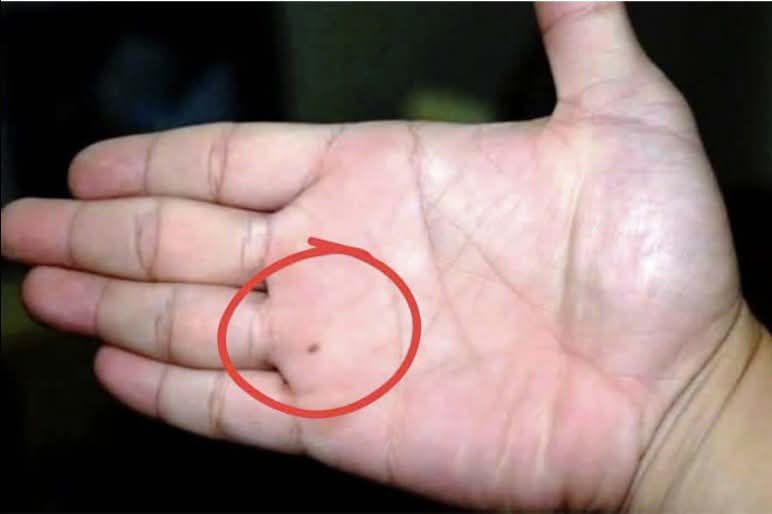ADVERTISEMENT
the Palm Signify?
- Melanoma: While it’s not common, a mole on the palm could potentially be a sign of melanoma, a type of skin cancer. Melanomas can develop in areas of the body that are less exposed to sunlight, such as the palms, soles of the feet, and under the nails. Therefore, a mole on the palm could be an early indicator of melanoma and should be closely monitored for any changes.
- Benign Growth: In most cases, a mole on the palm is benign and might not be a cause for concern. It could be a simple mole, also known as a common melanocytic nevus. These types of moles are typically harmless and do not require medical treatment unless they change or cause discomfort.
- Skin Tags: Sometimes, a growth on the palm may not actually be a mole but a skin tag. Skin tags are small, soft, and typically flesh-colored or slightly darker. While they are generally harmless, they can sometimes be mistaken for moles, especially if they are raised or pigmented.
- Trauma or Injury: If you’ve recently injured your palm or have a history of trauma in that area, a mole-like growth could form as part of the healing process. While this is typically harmless, it’s important to watch for any changes or discomfort in the area.
When to See a Doctor
If you notice a mole on your palm or any other part of your body, it’s essential to monitor it for any changes. You should see a dermatologist if:
- The mole changes in size, shape, or color.
- The mole becomes painful, itchy, or bleeds.
- The mole has irregular borders or uneven color.
- You notice new moles or growths that weren’t there before.
- You have a family history of skin cancer or melanomas.
A dermatologist can perform a thorough examination, including a biopsy if necessary, to determine whether the mole is benign or if further action is required.
How Are Moles on the Palm Diagnosed and Treated?
If you visit a dermatologist with concerns about a mole on your palm, they will typically perform a visual examination to assess the mole’s appearance. If they suspect that the mole could be malignant, they may recommend a biopsy, where a small sample of tissue is taken from the mole for laboratory testing.
In some cases, treatment may involve removing the mole if it’s found to be problematic. If the mole is benign and not causing any issues, it may simply be monitored over time to ensure it doesn’t change.
Prevention: How to Reduce the Risk of Developing Harmful Moles
While you can’t completely prevent the development of moles, there are some strategies to minimize your risk of developing harmful moles or skin cancer:
- Protect your skin from the sun: Although the palm is usually less exposed to the sun, it’s still important to protect your skin when you’re out in the sun. Use sunscreen regularly, wear protective clothing, and avoid excessive sun exposure, especially during peak hours.
- Regular skin checks: Perform regular self-examinations to check for any new moles or changes in existing moles. Look at your palms, soles, and other areas that are less frequently examined.
- Healthy lifestyle: Eating a balanced diet, staying hydrated, and avoiding smoking and excessive alcohol consumption can help keep your skin healthy.
- Annual dermatologist visits: It’s essential to see a dermatologist regularly for professional skin checks, especially if you have a family history of skin cancer or other risk factors.
Conclusion: Don’t Ignore the Signs
If you have a mole on your palm, it’s important not to dismiss it. While most moles are benign, the location and potential for changes in a mole’s characteristics should encourage you to be proactive. Early detection of skin cancer or other skin conditions is key to successful treatment. If you notice any changes in your mole or have concerns about its appearance, don’t hesitate to schedule an appointment with a dermatologist. Your skin’s health is important, and taking the necessary steps to monitor and care for it can help you maintain a healthy, happy life.
